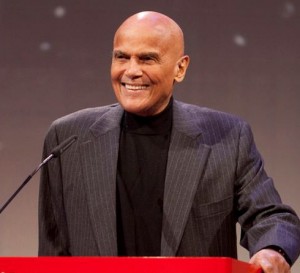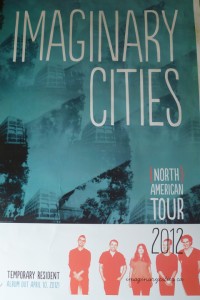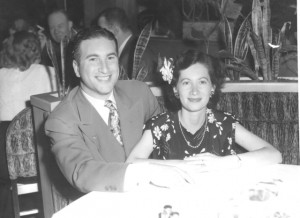 “We want a better America.” These were the first words printed in the program of the 62nd annual Hillman Prizes. Reading them I experienced a moment of cognitive dissonance, for only a few days earlier Mitt Romney had uttered something similar at a campaign rally: “A better America begins tonight.” However, the words in the program were spoken in 1946 by Sidney Hillman, a very different public figure than the presidential candidate, who had a very different public agenda than the quarter-billionaire politician. Hillman was President of the Amalgamated Clothing Workers of America, and he spoke them a couple months before his untimely death at age 59. The foundation that was later started in his honor has been giving out prizes for the best in advocacy journalism since 1950. Winners in previous years have included Murray Kempton, Bill Moyers, Spike Lee, Maria Hinojosa, and Robert McNeil and Jim Lehrer.
“We want a better America.” These were the first words printed in the program of the 62nd annual Hillman Prizes. Reading them I experienced a moment of cognitive dissonance, for only a few days earlier Mitt Romney had uttered something similar at a campaign rally: “A better America begins tonight.” However, the words in the program were spoken in 1946 by Sidney Hillman, a very different public figure than the presidential candidate, who had a very different public agenda than the quarter-billionaire politician. Hillman was President of the Amalgamated Clothing Workers of America, and he spoke them a couple months before his untimely death at age 59. The foundation that was later started in his honor has been giving out prizes for the best in advocacy journalism since 1950. Winners in previous years have included Murray Kempton, Bill Moyers, Spike Lee, Maria Hinojosa, and Robert McNeil and Jim Lehrer.
The latest rendition of the awards was held, fittingly, on May Day. I had been invited to attend by Tom Watson of causewired.com who asked more than a dozen bloggers to be part of a guest blogging contingent for this event at the New York Times Center. We were seated with a prime view of the presenters and recipients, with access to wifi so we could live tweet the proceedings. I emerged a few hours later, fired up and rededicated to the proposition that dedicated reporters, photographers, broadcasters, and authors really do make a difference in people’s lives.
The evening kicked off with remarks by Bruce Raynor, President of the Hillman Foundation, who observed that while New York Times columnist David Brooks has over the past few years been naming recipient of his “Sidney” awards, named in honor of conservative thinker Sidney Hook, the Hillmans have been giving out their “Sidney awards” for decades, and I promptly tweeted that we were at the “progressive Sidneys.” Here’s a rundown on the honorees, with takeaways from the speeches, and photos from the evening, reproduced here from notes and partial audio tape. Corrections welcome, please excuse any errors or omission; for further information, this link will take you directly to the Hillman Prize website. Click on this link to read about all the honorees and view lots more photos. // more. . .
 There’s a terrific music festival coming up in downtown Brooklyn this weekend, the Brooklyn Folk Festival, and I’m planning to take in some of the festivities with my wife and son. Highlights include a special observance on Friday night marking the 100th birthday of Woody Guthrie; workshops on singing, banjo and mandolin; and performances by Peter Stampfel (ex- of the Holy Modal Rounders) and the Ether Frolic Mob, and by the Wretched Refuse String Band. It takes place Friday night, and begins at noon on Saturday and Sunday, stretching late into the nights. These two videos, with performances by Jerron Paxton and Clifton Hicks are highlights from last year’s program. This is going to be the fourth rendition of the festival, and every year they’ve had stellar line-ups. This year festival director Eli Smith has arranged for more than thirty acts over the three days, plus film screenings and appearances by authors of such books as Gone to the Country: The New Lost City Ramblers and the Folk Music Revival. I hope to see you there.
There’s a terrific music festival coming up in downtown Brooklyn this weekend, the Brooklyn Folk Festival, and I’m planning to take in some of the festivities with my wife and son. Highlights include a special observance on Friday night marking the 100th birthday of Woody Guthrie; workshops on singing, banjo and mandolin; and performances by Peter Stampfel (ex- of the Holy Modal Rounders) and the Ether Frolic Mob, and by the Wretched Refuse String Band. It takes place Friday night, and begins at noon on Saturday and Sunday, stretching late into the nights. These two videos, with performances by Jerron Paxton and Clifton Hicks are highlights from last year’s program. This is going to be the fourth rendition of the festival, and every year they’ve had stellar line-ups. This year festival director Eli Smith has arranged for more than thirty acts over the three days, plus film screenings and appearances by authors of such books as Gone to the Country: The New Lost City Ramblers and the Folk Music Revival. I hope to see you there.





 My now sadly gone parents–Earl Turner beaming and his pretty wife Sylvia Shiff Turner, with a gardenia in her hair. They were on a trip in June 1948 from Cleveland, to Niagara Falls and Hamilton, Ontario, in Canada, and to Detroit. The Turners liked Canada even then. Happy Mothers Day!
My now sadly gone parents–Earl Turner beaming and his pretty wife Sylvia Shiff Turner, with a gardenia in her hair. They were on a trip in June 1948 from Cleveland, to Niagara Falls and Hamilton, Ontario, in Canada, and to Detroit. The Turners liked Canada even then. Happy Mothers Day!
